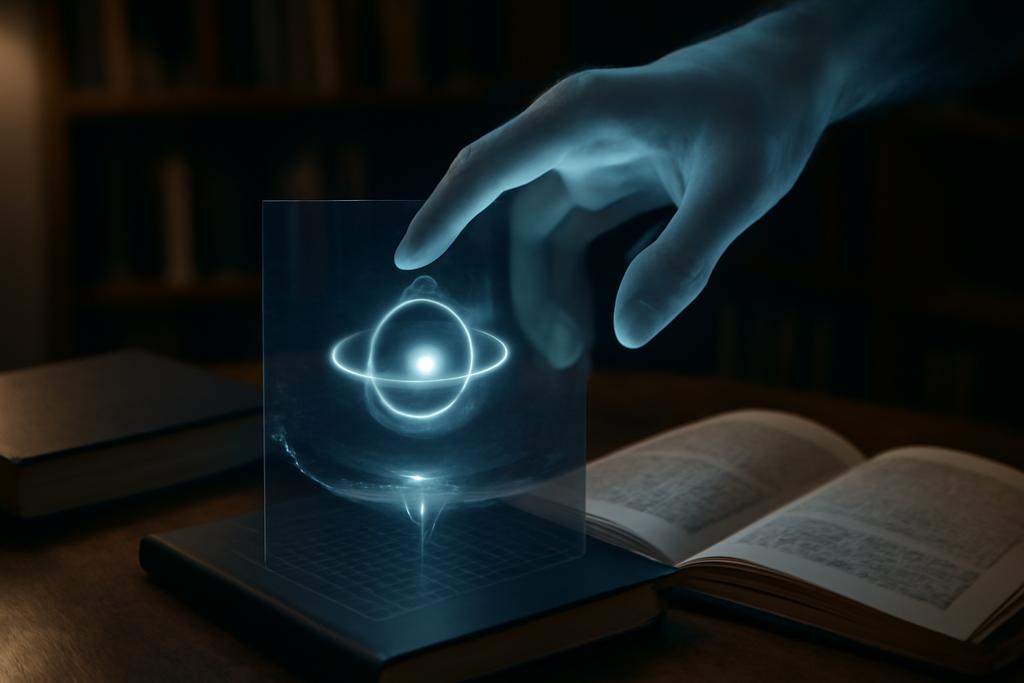The quest to unify gravity with quantum mechanics—a holy grail of theoretical physics—has led researchers down many winding paths. One promising avenue is asymptotic safety, a concept suggesting that quantum gravity, rather than collapsing into an intractable mess of infinities at high energies, reaches a stable fixed point, much like a ball settling at the bottom of a bowl. But the details are devilishly complex. New research from the University of Sussex, led by Varun Kher, Brandon King, Daniel F. Litim, and Manuel Reichert, takes a crucial step in this journey by directly investigating how quantum gravity influences matter.
The Spectral Dance of Matter
The study tackles this challenge through the lens of spectral functions. Think of a spectral function as a detailed inventory of all the energy states a particle can occupy. In the familiar world of classical physics, a particle has a well-defined mass and energy. But in the quantum realm, thanks to fluctuations and virtual particle creation and annihilation, the picture blurs. The spectral function captures this ambiguity, telling us the probability of finding a particle in various energy states.
Researchers specifically focused on the spectral functions of photons and scalar particles (a type of fundamental particle that plays a key role in several theories). In a universe without quantum gravity, these spectral functions are straightforward: a sharp peak at the particle’s mass. What happens, however, when the fabric of spacetime itself is quantized?
Gravity’s Rewriting of the Textbook
The researchers found that quantum gravity significantly alters matter’s spectral function. The sharp peak gets broadened and smeared, reflecting the impact of gravitational fluctuations on the energy states available to the photons and scalar particles. They introduce an additional continuum of energy states at both low and high energies, a reflection of the fact that gravity is fundamentally interacting with matter at the quantum level. This is not just a quantitative shift; it’s a qualitative change in our understanding of fundamental particles.
The researchers used a sophisticated technique called the spectral renormalization group, allowing them to analyze these effects in the context of a Lorentzian spacetime—a crucial step because calculations often rely on approximations that assume a Euclidean (non-physical) spacetime.
Beyond the Expected: Unexpected Negative Probabilities
One surprising discovery is the emergence of negative probabilities at high spectral values. This might seem paradoxical, but it’s an artifact of the entanglement between the quantum fluctuations of gravity and matter. These negative parts don’t reflect a problem in the theory but highlight the interconnected nature of gravity and matter, defying our usual intuitions.
The implications are profound. In the standard model of particle physics (without quantum gravity), photons and scalar particles are considered fundamental, with well-defined properties. This research suggests that, at high energies, where quantum gravity effects become significant, these textbook properties blur. Their interactions with gravity at high energies essentially “rewrites” the properties of matter, making their traditional characterizations incomplete.
Form Factors and Scattering Amplitudes: The Next Frontier
The study goes further, connecting these spectral functions to form factors, which determine the strength of particle interactions during scattering events. Because the spectral functions themselves are affected by the high-energy quantum gravity effects, the form factors reflect this alteration. In simple terms, how particles interact during collisions changes in the quantum gravity regime, which can lead to significant changes in observed physics at the highest energy scales.
The researchers found that the form factors they calculated become divergent at high energies—which is concerning because they are directly related to scattering amplitudes (a measure of the probability that particles will scatter). This highlights the need to refine the model by incorporating similar quantum gravity corrections to particle interaction vertices (the points at which particles interact).
Looking Ahead: Unitarity and the Future
The work emphasizes the need for further investigation of scattering amplitudes, especially as they relate to gauge independence. In particle physics, observable quantities should be independent of the specific mathematical gauge choice used in the calculations; this research showed that is no longer true once quantum gravity is included. This gauge dependence will need to be addressed and hopefully resolved as the theoretical framework is refined.
The researchers hope to expand this work by calculating quantum-corrected vertices to see how they interact with the altered propagators. This will allow for a better understanding of unitarity—a fundamental principle stating that probabilities should always add up to one—in the context of quantum gravity. The ultimate goal is to develop a complete and consistent description of how matter behaves under the influence of quantum gravity, opening a window into a realm where our current understanding breaks down.










